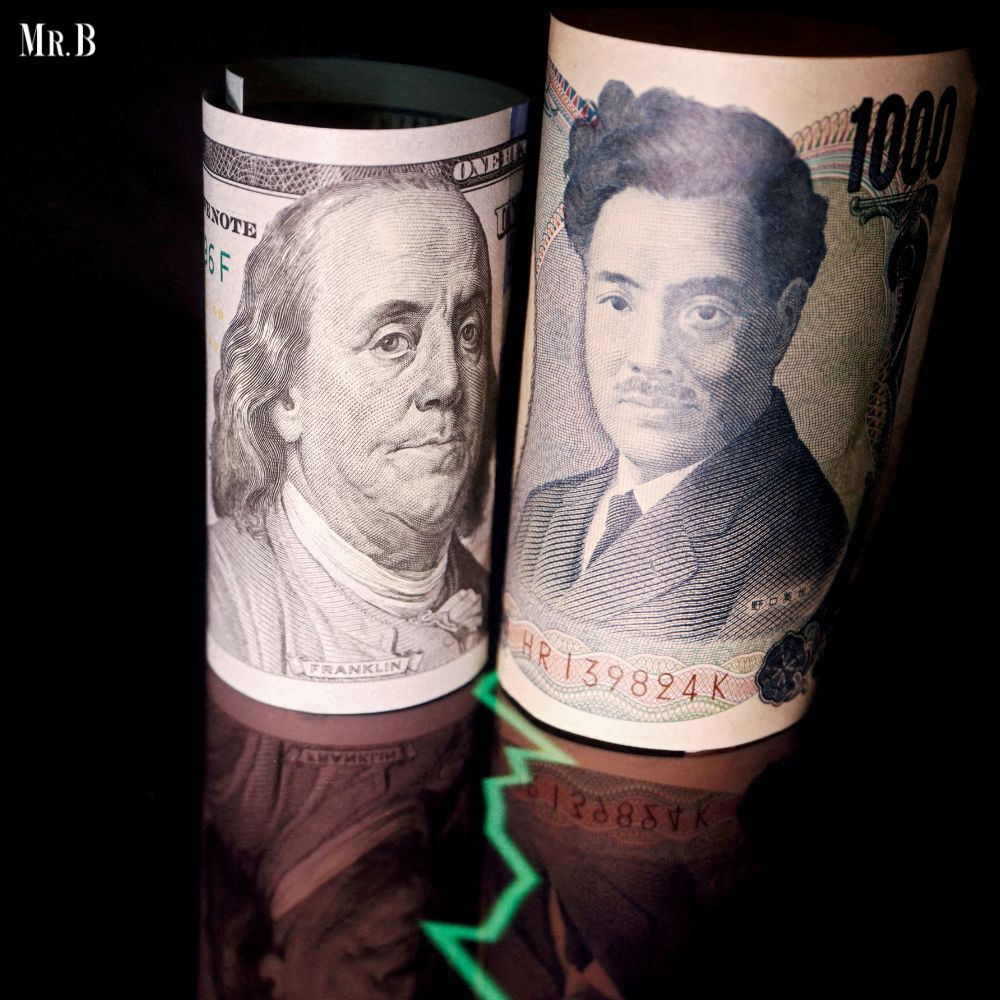(Source- Reuters)
Nikkei Leads Losses Amid Yen Volatility
On Friday, Asia-Pacific markets displayed mixed reactions following the release of U.S. inflation data for June, which showed the lowest increase in about three years, providing the Federal Reserve with potential room to lower interest rates. The consumer price index rose by 3% year-on-year, a slower increase than May’s 3.3%. Core inflation, which excludes food and energy costs, rose 0.1% monthly and 3.3% annually, compared to expectations of 0.2% and 3.4%, respectively.
The Japanese yen saw a sudden strengthening against the U.S. dollar early on Friday after the U.S. inflation data was released, leading analysts and traders to suspect possible intervention by Japan’s Ministry of Finance. The yen traded at 158.55 against the dollar around 12 a.m. Tokyo time, after being at 161.52 late Thursday. Later on Friday, the yen weakened again, trading at 159.26 against the greenback.
Japan’s Nikkei 225 experienced a significant drop of 2.3%, leading the losses in Asia. This decline followed three consecutive days of setting new closing highs and reaching an all-time high on Thursday. The Topix index also retreated, falling 1.1%. Japan’s top currency diplomat, Masato Kanda, commented that authorities would take necessary action in the foreign exchange market, noting the rapid recent movements of the yen, though he did not confirm any intervention.
Mixed Performance Across Asia-Pacific Markets
Elsewhere in the Asia-Pacific region, South Korea’s Kospi dropped by 1.2%, while the small-cap Kosdaq slipped by 0.3%. In contrast, Hong Kong’s Hang Seng index surged by 1.98%, buoyed by positive economic data from China. The mainland Chinese CSI 300, however, dipped by 0.2%.
China’s exports outperformed expectations, rising 8.6% year-on-year in June compared to an 8% forecast and a 7.6% increase in May. However, imports decreased by 2.3% year-on-year, contrary to the anticipated 2.8% rise. Consequently, China’s U.S. dollar-denominated trade surplus widened to $99.05 billion, surpassing May’s $82.62 billion and the expected $85 million.
The Taiwan Weighted Index also faced declines, falling nearly 2%, driven by significant drops in major stocks such as Taiwan Semiconductor Manufacturing Company and Foxconn, which fell by more than 3% and 4%, respectively.
Australia and U.S. Market Movements
In Australia, the S&P/ASX 200 rose by 0.8%, surpassing its previous all-time closing high of 7,896.9 set on March 28 and nearing its absolute peak. The positive performance in Australia contrasted with the mixed results seen in other Asia-Pacific markets.
Overnight in the United States, the S&P 500 retreated from a record high as investors shifted away from the year’s top-performing tech stocks, including Nvidia and Meta Platforms. The broad market index fell by 0.88% after briefly hitting a new high earlier in the session. The Nasdaq Composite also pulled back by 1.95%, impacted by a decline of more than 5% in Nvidia after it reached a new record earlier in the trading day. Meanwhile, the Dow Jones Industrial Average saw a modest gain of 0.08%.
The mixed market reactions in the Asia-Pacific region reflect ongoing global economic uncertainties and the impacts of inflation data and currency volatility. Investors continue to monitor these developments closely as they navigate a complex financial landscape marked by significant fluctuations and strategic adjustments.







